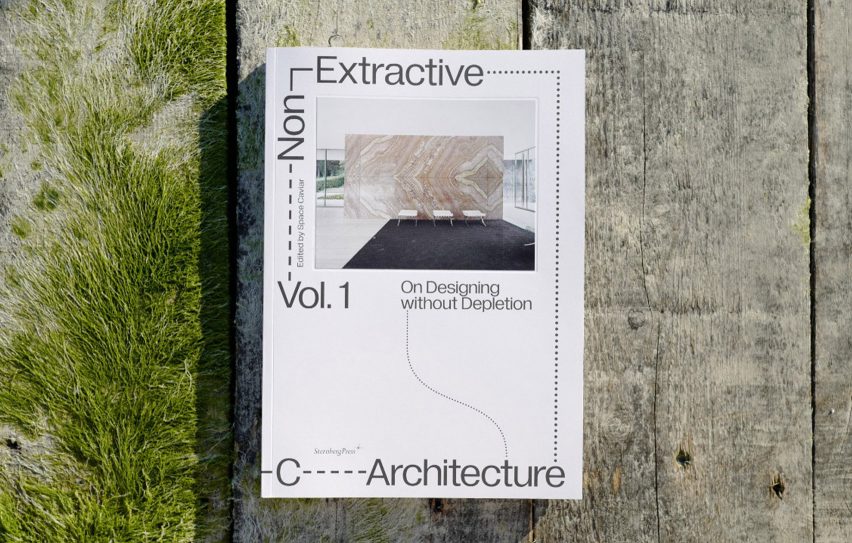
Environmentalism is replacing formalism in architecture says Joseph Grima
Young architects are rejecting "cookie-cutter modernism" in favour of approaches that prioritise conserving the earth's resources according to Joseph Grima, who has written a manifesto calling for a new type of non-extractive architecture.
Space Caviar co-founder Grima argued that architects increasingly see the discipline as a "form of stewardship of the natural environment" rather than a compositional exercise, as they become aware of the damage that construction is doing to the planet.
"There is a different attitude emerging, which is not based on the kinds of pre-conditions that might have been 100 years ago," said Grima, saying that modernism's "top-down" approach is increasingly being challenged.
"A lot of practices, especially the younger practices, and a lot of the discourse that is circulating at the moment, is very attuned to a philosophy that is not particularly formalist."

Grima made the comments during a live Dezeen talk to mark the launch of Non-Extractive Architecture, an exhibition and research programme at the V-A-C cultural institution in Venice.
The talk introduced the ideas of non-extractive architecture, which advocates an approach to building that does not exploit the planet. Grima has edited a book on the same topic that serves as a manifesto for a form of architecture that avoids exploiting the planet's resources.
"Dangers" of venerating heroic modernism
In the talk, Grima used Mies van der Rohe's Barcelona Pavilion as an example of "top-down" architecture.
The pavilion, built for the 1929 International Exposition in Barcelona, is regarded as a seminal example of modernism for its formal qualities and use of materials such as green marble, travertine and onyx, yet little attention is paid to the origin of these materials.
"Where did that stone actually come from?" Grima asked. "What is the history of its extraction? What will be there now that it is no longer there? What were the consequences of it ending up in this architectural masterpiece?"
"There are a lot of dangers in the elevation in sort of veneration of that model of heroic architecture," he added. "It's this kind of top-down relationship with the landscape that was very much driving the impetus of modern architecture."
"We're not particularly interested in this centralised, heroic model of the architect," he continued. "That's a dangerous model to give to young designers today."
With the construction industry accounting for 38 per cent of global CO2 emissions, Grima emphasised that architects should be questioning the "invisible side effects" of the production of buildings and strive to use methods of production that do not involve the extraction of natural resources.
Buildings should respond to climatic surroundings
In the talk, Grima discussed how a new type of vernacular architecture could be used to replace less sustainable forms of building.
According to Grima, this focuses on creating buildings that are more responsive to their climatic surroundings and rely on less exploitative supply chains.
"I think this idea of perhaps shortening supply chains, having less international sourcing of materials, less international sourcing of labour related to architecture is a great starting point," explained Grima.
Rejecting "cookie-cutter modernism"
This new perspective will lead to buildings that are more in tune with their surroundings, he added.
"We don't want just the same kind of cookie-cutter modernism, powered by HVAC systems being replicated all across the world," said Grima.
"We want them to also resonate a little bit with the specific conditions that they're in."
He hopes that this new vernacular could lead to a more collaborative, community-led direction for architecture in general.
"We're interested in the architect as a collaborative figure who is deeply embedded within the community," Grima said.
Non-Extractive Architecture manifesto
Non-Extractive Architecture: On Designing Without Depletion is a manifesto developed by Space Caviar that calls on architects to design and create buildings that do not exploit people or the planet.
Alongside the written manifesto, an exhibition is taking place at V-A-C that runs until January 2022 to coincide with the Venice Architecture Biennale.
The exhibition acts as a residency programme and aims to develop non-exploitative research for a second book which is due to be published next year.
Non-Extractive Architecture: On Designing without Depletion takes place from 15 March to 31 January 2022 at V–A–C Zattere Dorsoduro 1401, 30123 Venice, Italy. Due to coronavirus, the exhibition is currently closed and will open once Covid regulations allow it to.
See Dezeen Events Guide for an up-to-date list of architecture and design events taking place around the world.